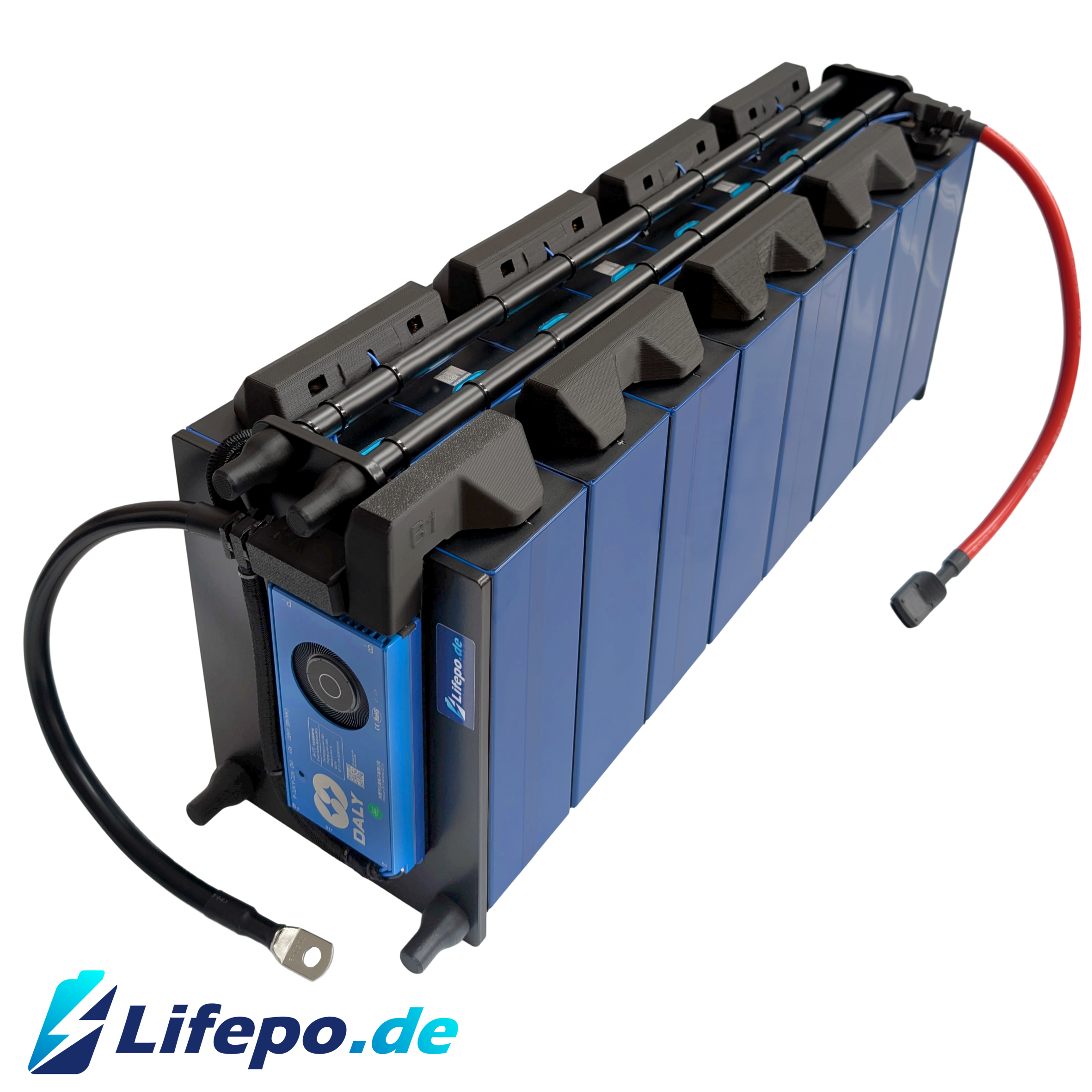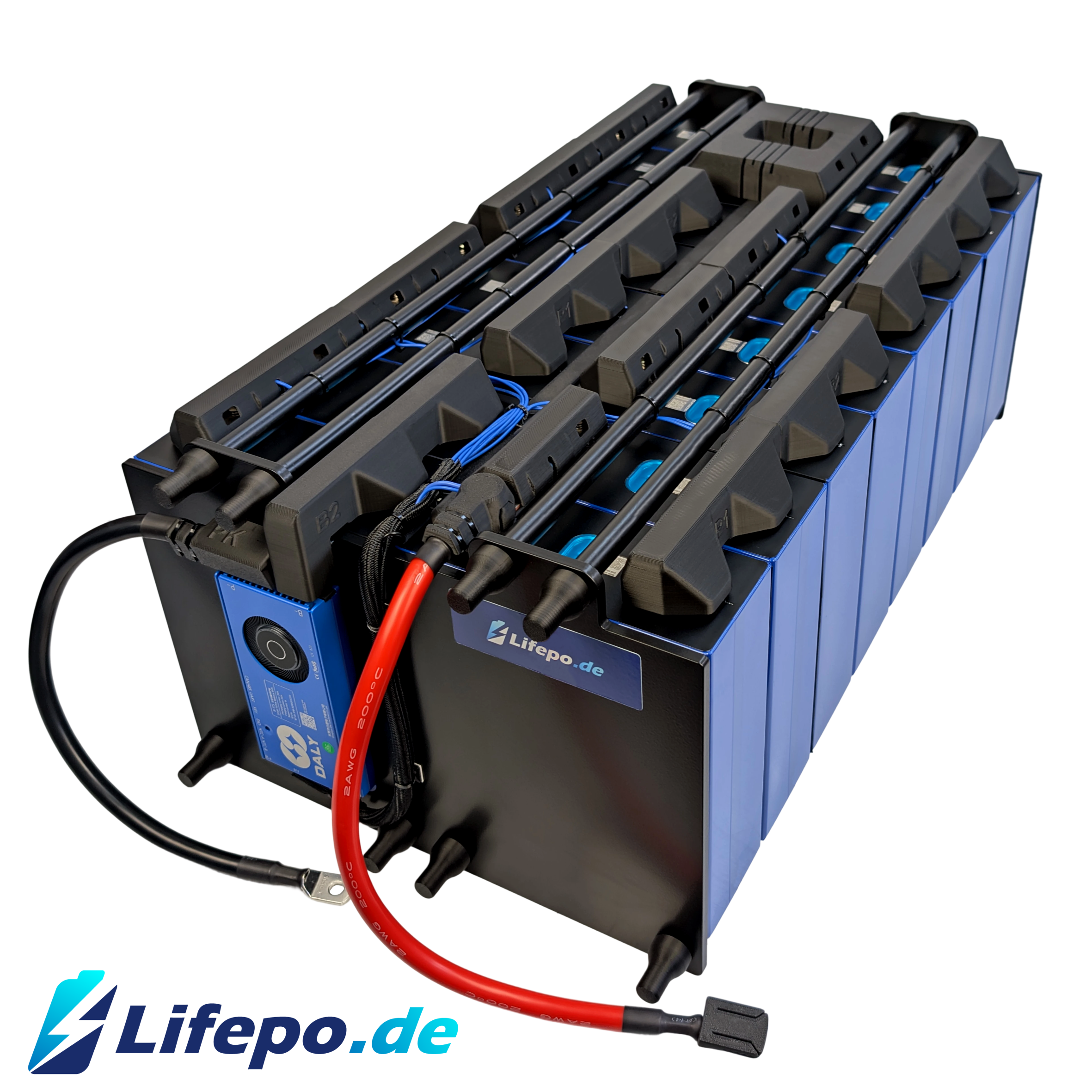Menu

How to build a photovoltaic system with battery storage.
With rising electricity prices and low compensation for self-generated electricity, solar systems with battery storage are becoming increasingly attractive. In the event of a power outage, such solar storage systems can also be used as a backup for medium to long periods, as the system automatically disconnects from the grid via a suitable inverter and operates autonomously.
Our battery systems can z.B. be used in these systems:
PV storage, solar storage for cars, emergency power storage, zero feed-in, power station, etc.
Before installing a solar power system, a few prerequisites must be considered. Choosing the optimal location for the solar modules, the storage capacity, and the charge controllers or inverters are essential to benefit from the stored solar energy. Furthermore, the solar system should be designed according to your needs and the system's location. Generally, the solar system can be designed somewhat larger to ensure the system can also benefit during the winter months.
In the following example, the components and their interconnection.
The generators
As generators for a 48V solar system, z.BFour standard Victron BlueSolar photovoltaic panels, each with 360 watts, can be used. The power of a module can be adjusted by UMPP x IMPP calculate (38.4 VMPP and 9.38 AMPPMPP = Maximum Power Point). The total output of the solar modules is 4 x 360 Wp = 1440 Wp.

The charge controller
To store the power from the modules in the battery, a solar charge controller is required. This converts the voltage of the photovoltaic module to the voltage of the battery. In this case, it's 48V. (The voltage range of our 48V LiFePO4 battery is between 40V and 58.4V.) Solar charge controllers are divided into PWM and MPPT charge controllers. A PWM charge controller works with pulse-width modulation, which adjusts the voltage of the solar module to the voltage of the battery while maintaining a constant current. With the modern and significantly more efficient MPPT charge controller (Maximum Power Point Tracking), the electrical load on the solar module is adjusted so that the maximum power can be drawn from the solar modules.

The battery system
In this example, a 48V 16kWh/312Ah battery storage, with a continuous discharge power and continuous charging power of 10240W Watts are used. Further technical information about this system can be found here.
When comparing electrical storage options, lithium iron phosphate technology stands out with its advantages over other storage technologies. Safety with only slightly lower energy density compared to lithium-ion or lithium-polymer batteries enables applications that also meet high fire safety requirements. Compared to lead-acid and AGM batteries, higher Energy extraction is possible, while at the same time the cells offer significantly higher cycle stability. This argues in favor of purchasing battery systems with LiFePO4 technology.
The inverter
To make the stored energy usable for home devices, an inverter must be used. A pure sine wave voltage is essential for sensitive electronics.In this example, the inverter "Victron MultiPlus 2" This has the special feature of being able to automatically switch between mains voltage and battery supply within milliseconds. Zero feed-in is also possible through appropriate software settings. In the event that the solar modules generate little power over an extended period, the battery can be charged via the mains voltage. This way, in the event of a power outage, the system could automatically switch to battery supply and continue to supply the household appliances with electricity. How long this supply can be maintained can be found in the Performance comparison of our battery systems.

Safety (aspects) and commissioning
For applications using mains voltage, commissioning must be checked and approved by a qualified technician. For your own safety, systems operating on mains voltage must always incorporate protective devices such as residual current devices (RCDs) and fuses.
For smaller applications, such as a balcony power plant, smaller battery systems with smaller Inverters, solar charge controllers and photovoltaic modules. This depends on the individual case. Case varies.
The following circuit diagram can be used as an example for basic considerations. Consult your electrician for questions regarding connection to the public grid and the design of the photovoltaic system.

If you have any questions or suggestions, please feel free to here through our contact form or under kontakt@lifepo.de to reach.
All information is provided without guarantee.
Have we piqued your interest? Then shop our Lifepo4 battery kits here:
Lifepo4 battery kits
- If you make a selection, the page will be completely updated.
















